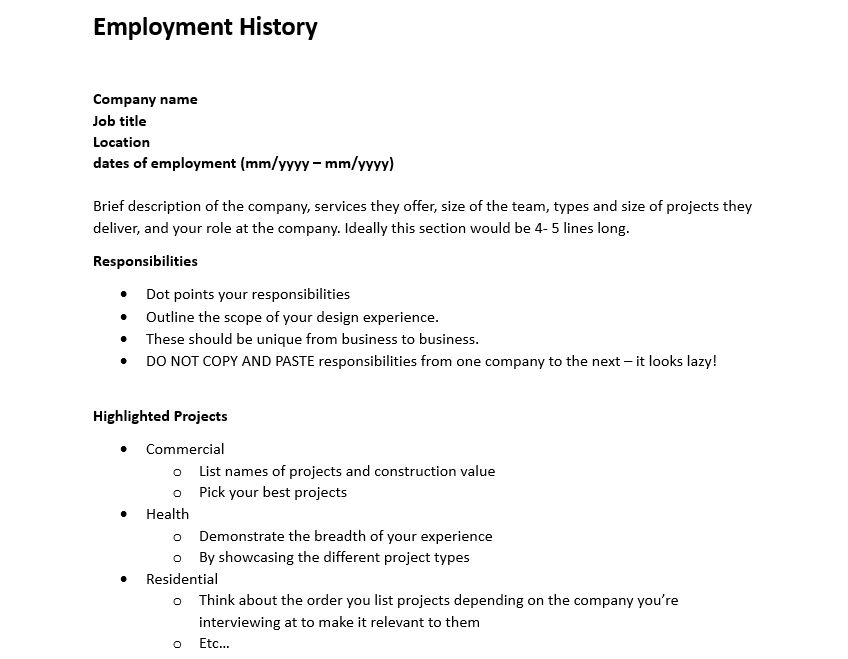How to Best Prepare for an Interview: A Step-by-Step Guide
Tips On How To Write A CV
Clear, Concise and Easy to Read!
Hey there, job seekers! Let's talk about the ultimate secret weapon in your job hunt arsenal: your CV (or Resume, if you're feeling fancy). Yep, that little piece of paper (or digital document) can mean the difference between scoring an interview and getting hit with the dreaded rejection email. So, buckle up and let's dive into the world of crafting a killer CV that'll have hiring managers begging to meet you.
Picture this: you're a hiring manager swamped with stacks of CVs, all vying for your attention. In this fast-paced, first-impressions-count world, a well-presented and easy-to-follow CV can catch an employer's eye faster than a squirrel chasing a nut. Seriously, folks, this stuff matters!
But hold on, before you start sweating over fonts and margins, let's break down the essentials you need to include in your CV. Ready? Let's do this!
Introduce Yourself: Ditch the generic titles like 'Curriculum Vitae' – it's time to own that page. Plaster your name, professional title, and contact deets right at the top, where they're impossible to miss. Oh, and while we're at it, leave your full address in the past – just your suburb will do. If you're feeling fancy, drop a link to your LinkedIn profile here.
Show Your Personality: You've got a limited space to sell yourself, so use it wisely. Whip up a personal profile that packs a punch. Tell 'em who you are, what you bring to the table, and where you're headed. Oh, and tailor it to the job you're eyeing. Think of it as your elevator pitch on paper – short, sweet, and oh-so-effective.
The Education Scoop: Your education's gotta make an appearance too. Flip it into reverse chronological order – that's the fancy way of saying start with your latest education experience. Slap down the institution, dates, and your hard-earned qualifications and grades. Fresh out of school? Stack it like a sandwich – institution, dates, then your shiny degree.
Work That Experience: Time to flaunt your professional journey. Starting with your most recent gig, list your previous jobs, internships, and work experiences. But don't just stop there – drop some juicy details about your job title, employer, and dates. Then, hit 'em with those responsibilities, skills, and project experience. Pro tip: sprinkle in some action verbs and numbers to really make your impact shine.

Skills and More: Got skills? Of course, you do! If they're relevant to the job you're gunning for, shout about 'em in a dedicated skills section right under your personal profile. But remember, quality beats quantity – aim for four or five top-notch abilities that'll make those hiring peepers widen.
Accreditations and Memberships: Are you a CPEng or a professional Engineer? Pop these at the end in their own section along with any associations you are a member of.
Unleash Your Inner Hobbyist: Feeling a little empty on that CV? Toss in some hobbies and interests at the tail end. It's like seasoning for your CV – it adds that extra flavour and shows how you'd blend into the company's culture.
Now, let's talk aesthetics:
- Size Matters: Keep it short and sweet – ideally, three pages max. Hiring managers are speed-readers, so make every word count.
- Headers for Days: Bold headings are your BFFs. They make your CV easy on the eyes and help it flow like a perfectly curated playlist.
- Fonts & Margins: Think of it like a style makeover – choose a clear font (Calibri or Arial are classic choices) and play around with font sizes. Aim for 10-12pt for the body and 14-18pt for those headings. Margins? Keep 'em around 2.5cm – too narrow, and it'll look like a text tornado hit your CV.
- Proof Is in the Pudding: You wouldn't wear mismatched socks to an interview, would you? Same goes for typos and inconsistencies. Proofread that bad boy like your job depends on it – because it kinda does.
So there you have it, pals! Your guide to creating a CV that's so hot, it practically sizzles. Now you're armed and ready to tackle the job market like a champ. Go out there, dazzle 'em with your awesomeness, and remember, luck favors the well-prepared. Good luck on your job hunt adventure!



